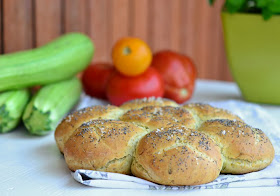There are certain moments when everything seems possible, when fairy-tales come real, when one can see beyond the imaginary frontiers of the universe. Maybe being a daydreamer what I am makes it easy to believe and see.
I was having a coffee with a friend today and she said her son who is 4 still believes in Santa. I'm 29 and I do believe into the magic with all my heart. Does that make me too naïve? So what? I do believe in the Santa spirit and love the emotions that Christmas brings. The smell of cookies, mulled wine, all the family and friends gatherings. Isn't that what Christmas is all about. I'm not very fond of the commercial side of the holiday – all the shopping and gift giving that turns out quite useless most of the times.
When I was a child there were no fancy toys, there was no Santa. I don't even remember if we ever celebrated Christmas. This was a capitalistic holiday. All we celebrated was the New Year Eve. Of course, there were presents for the children, but the choice wasn't so great. I always received a doll, although never played with it.
But although without the Christmas fuss I was a happy child. This was the time when my mother would make us pancakes for breakfast and we would eat them while stirring vigorously some rye coffee with water in order to make it into foam. Then my father would pack up me and my sister into the sledge and would take us to kids' cinema. And later at night I would read fairy-tales to my sister.
One of my favourite fairy-tales was about a tailor in whose workshop there were little creatures springing to life during the night and helping him with his work. I've had countless sleepless nights stalking for little creatures.
Now they've come to our kitchen :)
Chocolate Coconut Cookies Recipe:
Makes around 60 cookies
Adapted from Mad About Maida
For the Filling:
- 85 gr cream cheese;
- ½ tsp vanilla extract;
- 60 gr granulated sugar;
- 90 gr dessicated coconut;
- 60 gr ground walnuts.
Spread a sheet of parchment paper or plastic wrap. Using your hands shape the mixture into a long log, then wrap it into the prepared wrap. I formed the filling into two 35cm long logs but they were a little bit hard to handle, so the next time I would form it into several smaller logs. Refrigerate for a couple of hours.
For the Chocolate Dough:
- 185 gr all purpose flour;
- ½ tsp baking powder;
- pinch of salt;
- 100 gr confectionner's sugar;
- 55 gr dark chocolate, melted;
- 90 gr cold butter, cut into 1 cm pieces;
- 1 tsp vanilla extract;
- 1 egg.
Place flour, salt, baking powder and sugar in the bowl of the food processor, equipped with the metal blade, and pulse to combine. Add in cold butter pieces and pulse a couple of times until crumbly. Add in egg, vanilla and melted chocolate and pulse just to form dough. Gather the dough to a ball, flatten it to a disk, wrap in plastic wrap and refrigerate for 4 hours.
Take out of the fridge. On a lightly floured counter top, roll out the dough, then cut it to strips the length of the filling logs. Place the filling log over the chocolate dough strips and roll up like sushi, besides sushi mat could be of help here. Wrap in plastic (reuse the plastic wrap from the filling!) and refrigerate for an hour.
Preheat the oven to 180ºC. Line a baking sheet with silpat. Cut the log into 1 cm slices. Press each slice between your palms to flatten it a bit– I didn't do this with the first batch that went into the oven since I expected the cookies to spread but they didn't and some pretty fat cookies came out of the oven, so do give them a little face-lift.
Bake cookies for 6-7 minute, although it depends of their size. Cool on a wire rack.









































